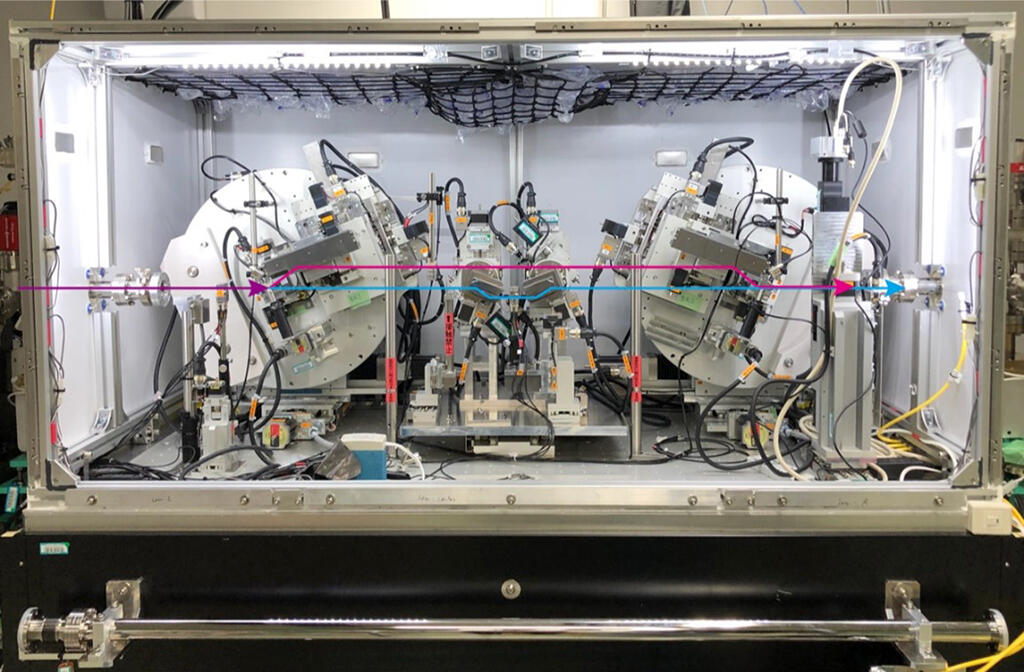A joint research group led by researcher Taito Osaka of the Beam Line Research and Development Team, Beam Line Research and Development Group at RIKEN, Group Director Makina Yabashi, Kensuke Tono, Group Leader, RIKEN SPring-8 Center Innovative Synchrotron Radiation Facility Division and Professor Kazuto Yamauchi of the Graduate School of Engineering at Osaka University have succeeded for the first time in the world in directly measuring the pulse duration (emission time) of XFEL at the SACLA X-ray free electron laser (XFEL) facility.

Provided by RIKEN
The joint research group directly measured the pulse duration of an X-ray laser, shorter than 10 femtoseconds (100 trillionth of a second) using "intensity autocorrelation measurement." Intensity autocorrelation measurement is a standard method for measuring the pulse duration of a visible laser, and basic research has been carried out on X-ray lasers since their development. "The development of the all-important X-ray autocorrelator has had its fair share of twists and turns on the way to its practical application, however, it has been considered unfeasible as a measurement method due to a lack of strength" commented Dr. Osaka. To increase the intensity of X-rays that passed through the X-ray autocorrelator, the research group created a bright X-FEL with a short wavelength duration by the self-seed method.
As a result, they achieved an intensity of over 1016 W per square centimeter for an XFEL with a wavelength of 1.38 Å. This intensity is sufficient to observe the nonlinear optical phenomenon of X-ray two-photon absorption. The probability of occurrence of X-ray two-photon absorption was measured by shining XFELs replicated by an X-ray autocorrelator onto a zirconium thin film with slightly different arrival time differences, and the research group confirmed that the probability of occurrence increased only during the time overlap of each XFEL, about 20 fs. From the measurement results, the pulse duration of the XFEL was determined to be 7.6 ± 0.8 fs (full width at half maximum of a normal distribution), which was consistent with previous indirect evaluation results.
"For visible lasers, an advanced version of this measurement method has led to the measurement of complete time waveforms, and we expect a similar development for X-ray lasers," says Dr. Osaka. "We also expect that this method will be a catalyst for new X-ray nonlinear optics technology using X-ray autocorrelators."
■ Intensity autocorrelation measurement: One of the most common pulse duration measurement techniques for ultrashort pulsed lasers, and the most common technique for visible lasers. Two duplicate pulsed beams obtained through an autocorrelator are shined on a target medium while slightly shifting the difference in arrival time between the pulsed beams. By using a medium that produces a signal proportional to the product of the laser intensities, a strong signal is obtained only when the two pulsed beams overlap in time. Since the signal intensity waveform relative to the time difference between the pulsed beams directly reflects the time waveform of the replicated laser, the pulse duration can be derived from the measurement results alone.
This article has been translated by JST with permission from The Science News Ltd.(https://sci-news.co.jp/). Unauthorized reproduction of the article and photographs is prohibited.




